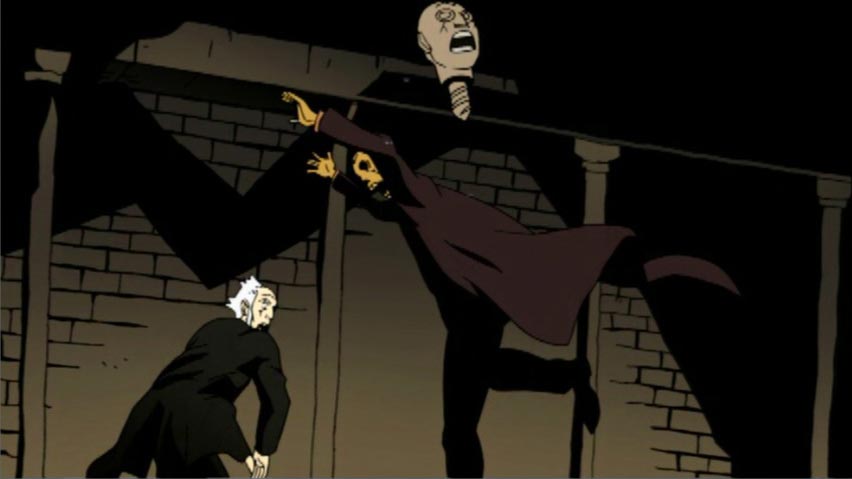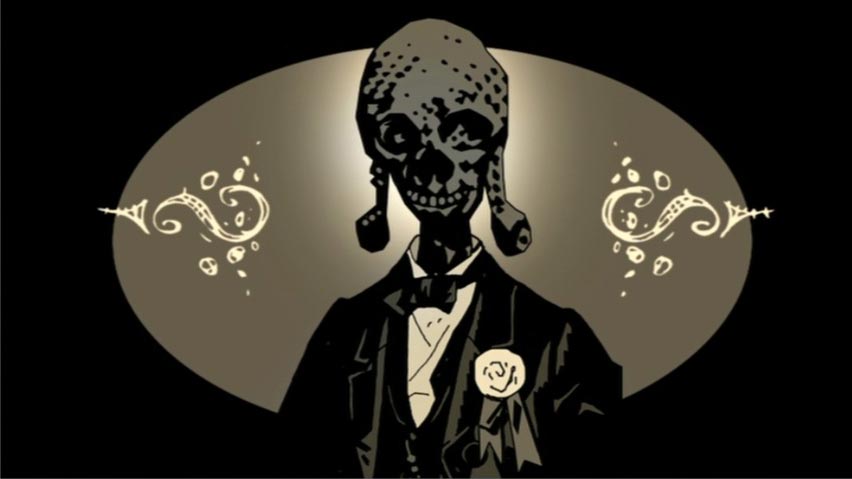Medical research has always had a bit of a drawback, and that’s that healthy people typically don’t want doctors and researchers poking about in their innards. Think about it. If you’re feeling fine, why are you at the doctor’s office?
Okay, maybe you’re poor enough to be selling plasma. Or taking ten to twenty bucks for participating in some study or other. If you need the money that badly, stuff that wouldn’t normally sound like a good idea starts to sound better. Why else are they offering money in the first place, except to encourage you to be there to be poked and prodded and bled?
Fine. Research is important and $10 is $10. Take what you can get. $10 is another three or four days of eating if you’re frugal.
But there’s an important consideration here. Doctors and researchers need to remember that they’re getting their data from poor people. Poverty means poor nutrition as well, and poor nutrition means poor health, both physically and mentally.
Western medicine finally figured this out less than a hundred years ago. This was around the end of the era where the “resurrectionists” were digging up the recently dead to sell cadavers to medical schools. City officials still donate unclaimed corpses from flop houses and orphanages because burials are expensive and medical research will always need cadavers of every age.
But this kind of exclusive source of cadavers can lead to serious medical goofs, such as “status thymicolymphaticus“, which, in the late eighteen hundreds, right after the discovery of X-rays, was believed to be the cause for Sudden Infant Death Syndrome. See, when babies were taken in for their checkups they were X-rayed to hell and back because no one knew that was particularly bad for you, and the X-rays showed this huge thymus gland apparently weighing down on the babies’ pulmonary apparatuses, and, since studies of little baby cadavers showed tiny little shriveled thymuses instead of bloated, lymph-filled thingies, the doctors would use said X-rays to irradiate the fuck out of the thymuses until they were suitably shriveled and/or nonexistent and declare the babies healthy.
No one particularly thought that maybe dead babies had died for a reason, and among those reasons might be poor nutrition and poor hydration, and that that, in turn, might lead to a tiny shriveled thymus in addition to death.
It wasn’t until the 1960s that the thymus was discovered to be pretty damned critical to the immune system–particularly during childhood–as the body learns friend from foe, immunologically speaking.
In any case, trying to figure out the medicine of health from sick and dead people is tricky business. You have to study healthy people to get a good baseline.
Which is why this worries me a trifle. “Game worlds show their human side” is the title of the BBC article. I guess it’s accurate enough.
It’s high time that serious studies of the sociology of online interactions come into being. There’s a lot more of it now that there used to be, say, twenty years ago, and there will be a lot more later on than there is now. But I cringe to think that researchers will try to find extrapolatable facts from rules they discover from studying populations rife with people who prefer contact with others to be filtered through the impenetrable shield of online avatars.
Health is defined by what’s statistically “normal”, or at least prevalent enough to be accepted as a workable strategy. Homosexual inclination, for instance, is not particularly concerned with replication of genetic material and rearing children, but since non-breeding populations are not exactly detrimental to society in general and individuals have other worths that completely trump the decreasingly relevant choice to spawn biologically (a tendency neither unique to homosexuality nor a requirement of it), homosexual inclination becomes accepted. And a useful part of regulating population size without, say, culls. Or wars. Or famine. Or pestilence. Which are basically culls.
I don’t want doctors telling me in therapy that I will feel less uncomfortable among other people if I construct an exaggerated, physiologically unlikely, and aesthetically idealized self-image I’ll never be able to achieve in real life and use it like a puppet to talk to people I’d never have the nerve to talk to otherwise. Frankly, if I never needed to talk to human beings in the real world that might be fine, but, in fact, if I ever need to sit through a job interview or a thesis defense or talk to potential investors or (God Forbid I ever need to do this again) date, I should possibly have a less ludicrous and more realistic self-image.
I don’t know if I’ll be able to say that in another twenty years’ time, but I’m fairly convinced it’s true for now.
[*]
 I’m not making this up.
I’m not making this up.
UK military spokesman Major Mike Shearer says, “We can categorically state that we have not released man-eating badgers into the area.“
I’m not sure how well I’d be handling things if the choices I had made throughout my life had led me to the point where, while wearing my uniform with a bunch of shiny brass on it, as an official spokesperson for a serious first-world military organization complete with nuclear stockpile, I’d have to issue that remark as an official statement to the press.
I’d suppose being raised British would help. For that matter, supplementing my uniform with a pink tutu and holding a rubber chicken by the neck would likely also help. Because anyone present who even cracked a smile would be beaten senseless with the chicken, I shit you not.
Okay, this part I am making up. Because I’m fed up with the Christian churches hijacking pagan festivals and painting saints all over them, I’m creating a new pagan holiday right fucking now, complete with cute fuzzy animals and enslaved workforces creating and delivering goodies AND BLOODY FUCKING DEATH to the deserving. This festival involved DRUGS AND BOOZE and is for ADULTS ONLY. The kids have enough holidays already.
The festival is one of a number of festivals called BEERMAS because I don’t care that there might be other festivals called Beermas to the extent that I’m not even googling it. Don’t care. Don’t Care. Because there are no copyrights and trademarks on traditional pagan festivals even if they’ve only existed for forty-five minutes. Got that, you intellectual-property-grubbing Wiccans? Fuck you. On with the show.
On BEERMAS, the hard-working rock hyrax named Throaty Kneecap McForehead, having filled his last keg with zebra-and-donkey-piss magically transmuted into beer, whips his hordes of enslaved brewer bush babies into rolling the kegs onto the huge razor-wheeled chariot pulled by two ass-raping, man-eating honey badgers. (One, “Lefty”, female, is pictured above. “Penisface” is never pictured, as he is known to seek out and eat photographers.) Every Friday the Thirteenth, also known as BEERMAS, around 9:05 AM Throaty K. McForehead the Rock Hyrax hops into his chariot, “Rosebud”, pulled swiftly and eagerly by Lefty and Penisface the Honey Badgers, to tour the world, stuffing the fridges of the deserving with zebra-and-donkey-piss beer AND THE BLOODY HEADS OF ALL WHO CROSS ME*, their mouths stuffed with peyote buttons and magic mushrooms, before the deserving motherfuckin’ workers of the world make it back home from work to find the goodies. The undeserving will find their fridges stuffed with snakes — or would, if their own heads weren’t already in MY fridge stuffed to the gills with peyote and magic mushrooms.
Throaty, Lefty, and Penisface will heartily tie up and assfuck** the layabout slackers who stay home from work on a Friday the Thirteenth without being well-and-truly-and-in-Technicolor® ill and will only stuff the fridge for the slackers if they had a good time. Everyone deserves a second chance.
For the truly sick they deliver bush-baby-made chicken soup. Made from zebra and donkey piss. Be warned.
On days while the beer is brewing and they aren’t making deliveries, Throaty, Lefty, and Penisface go bowling, and the bush babies have to keep setting up the pins.
There you go.
Merry Fucking BEERMAS.
[*]
______________________
* Technically it’s the bloody heads of all who cross ![]() ladykinbote, since this part was her idea.
ladykinbote, since this part was her idea.
** Using a strap-on, in the case of Lefty.
 Another comic from Mike Mignola makes it to the
Another comic from Mike Mignola makes it to the big small screen. It should have been the big screen, but no one’s going to spend more time driving to the cinema than they’ll spend watching the feature. Hell, the previews last longer than 22 minutes these days. Regardless, it’s a big shame that most of you will never see this.
Mike Mignola is the writer/artist that brought us the fabulously successful Hellboy. Anyone who actually saw the comic book will recognize the signature style and palette in the animated The Amazing Screw-On Head–as well as the trademark steampunk/sf/horror themes. Those themes are rendered in The Amazing Screw-On Head with no punches pulled.
 Those of you who paid attention in US History class will remember that President Abraham Lincoln started the Secret Service, along with setting a wonderful precedent for suspending habeas corpus during war-time and inventing other “special rules” for preserving National Security — which is just like a Republican.
Those of you who paid attention in US History class will remember that President Abraham Lincoln started the Secret Service, along with setting a wonderful precedent for suspending habeas corpus during war-time and inventing other “special rules” for preserving National Security — which is just like a Republican.
[I don’t know who’s reading this that I’d have to say this to, but I’m not one of those Confederate Battle-Flag wielding loonies we get out in the woods around here. I don’t have much use for slaves. Or bigots. But weaving the carpet that all kinds of governmental travesties get swept under was a BIG mistake, and I don’t appreciate it. I don’t know Abraham Lincoln personally, but I have the feeling that if he knew what Grant, Harding, Nixon, and Bush Jr. were going to be bringing to the table, he would have been a hell of a lot more careful.]
 In any case, Screw-On Head is a hero who, like a Secret Service agent, reports directly to Lincoln and helps keep the (fragmented) country safe from supernatural and advanced (heh) technological assault–particularly from his ex-manservant-turned-low-budget-immortal Emperor Zombie.
In any case, Screw-On Head is a hero who, like a Secret Service agent, reports directly to Lincoln and helps keep the (fragmented) country safe from supernatural and advanced (heh) technological assault–particularly from his ex-manservant-turned-low-budget-immortal Emperor Zombie.
Screw-On Head is inherently ludicrous, starting with his anatomy–based on interchangeable mechanical bodies and a metal-encased (possibly robotic) head with a threaded neck–and moving up through his G.-Gordon-Liddy-as-a-Killer-Boy-Scout modus operandi. However, it’s Emperor Zombie’s educated and joyfully glib banter that steals the show. Again and again and again. It’s freakin’ hysterical.
 It’s easy to cast Screw-On Head as the rudimentary beginnings of The Bureau for Paranormal Research and Defense from Hellboy‘s backstory. That notwithstanding, Mignola say’s he’s completely done with Screw-On Head and has no dreams of adding more tales to the storyline. Apparently he got all the gags he wanted to perpetrate out of his system in this story. Those who want more will have to go find Will Smith/Kevin Klein/Kenneth Brannaugh’s Wild Wild West movie, I guess. (If you rent that with your credit card, the Department of Homeland Security is bound to put you on some list or other. I heartily recommend you use cash for anonymity purposes. There’s no way you want that rental on your permanent record.)
It’s easy to cast Screw-On Head as the rudimentary beginnings of The Bureau for Paranormal Research and Defense from Hellboy‘s backstory. That notwithstanding, Mignola say’s he’s completely done with Screw-On Head and has no dreams of adding more tales to the storyline. Apparently he got all the gags he wanted to perpetrate out of his system in this story. Those who want more will have to go find Will Smith/Kevin Klein/Kenneth Brannaugh’s Wild Wild West movie, I guess. (If you rent that with your credit card, the Department of Homeland Security is bound to put you on some list or other. I heartily recommend you use cash for anonymity purposes. There’s no way you want that rental on your permanent record.)
 I don’t know where you’ll have to go to find a copy of Amazing Screw-On Head. I live in Atlanta, and I found a copy at Videodrome, on North Avenue and North Highland on the border between Little Five Points and Virginia Highlands, East of Midtown. If you have a favorite independent rental place, I recommend checking there.
I don’t know where you’ll have to go to find a copy of Amazing Screw-On Head. I live in Atlanta, and I found a copy at Videodrome, on North Avenue and North Highland on the border between Little Five Points and Virginia Highlands, East of Midtown. If you have a favorite independent rental place, I recommend checking there.
Better yet, buy yourself a copy. You’ll probably stop re-watching it shortly after you’ve completely memorized the dialog and run out of friends and relatives you haven’t already forced to watch it two or three times. So it goes. When you’re done with your copy, be a trooper and mail it to me, and I’ll make sure it finds a good home.
 In the meanwhile, feel free to chop up those MP3s I linked above so you can make custom ringtones for your phone. I can’t think of a better way to advertise for an amazing movie than having friends and strangers ask you “What the fuck was that?!” every time your phone rings.
In the meanwhile, feel free to chop up those MP3s I linked above so you can make custom ringtones for your phone. I can’t think of a better way to advertise for an amazing movie than having friends and strangers ask you “What the fuck was that?!” every time your phone rings.
[*]
Interesting things happen in people’s heads when you tell them you’re a fan of Chuck Palahniuk’s work, and almost none of them are good. Even if you’re talking to another Palahniuk fan.
Yeah, there’s violence and gross stuff in his books. No more though than I recall from stories we’d tell one another around the cafeteria tables in high school, trying to score points by making each other spit food out of our mouths or snort it out of our noses or–a rare bonus–put one of our comrades off his or her feed so that whoever had stomach enough afterwards could finish the abandoned meal. It’s possible I may be speaking here from a somewhat desensitized viewpoint. I understand this. But the point I’m making is that a bunch of hobbyist amateurs were just as good at the gross-out.
Saying you’re a Palahniuk fan, though, isn’t necessarily saying that you’re a fan of the violence and gore and downright disgusting elements that makes reading a Palahniuk novel pretty much the same as taking your chances tipping back a box of Bertie Bott’s Every Flavor Beans. It’s not just about the gross-out.
One of Palahniuk’s recurring themes is that of people in search of real experiences instead of filtered, prettified, Photoshopped, video-edited, recorded, and packaged experiences. People who think that, even if there is nothing new under the sun, they should at least experience the sun for themselves. This was a major theme in Fight Club and a minor one in Rant. Critics claim a bit of recycling is going on here, but speaking as an author, I know what it’s like to not get everything you have to say all out of you in one go. Fight Clubs and Party Crashers might have similar motivations, but there’s nothing much in either one of those you won’t find in people who go to live concerts or raves or sporting events or even church–depending on the church, and it’s pretty much the reason for taking any drug you might be fond of: personal experience and a shared high. That’s not a cool new thing he’s invented. He’s giving you a look at a really old phenomenon, but he’s putting it in a new package so you’ll see it in a fresh way.
I like Palahniuk because I like the way he tells stories. I also like the stories he chooses to tell. But primarily it’s the first thing.
It’s hard to tell a story. You require an enormous amount of complicity from your audience. You can’t just throw words at someone and hope to keep them interested and involved. You have to help your audience achieve some kind of state where your words create an experience for them–a filtered, prettified, Photoshopped, video-edited, recorded, and packaged experience, but an experience nonetheless.
A quick aside: if you think Palahniuk is preaching that people should have their own high-impact experiences instead of dealing strictly in the prepackaged, then understand you’re accusing an author of preaching against books. Accusing a storyteller of preaching against stories. Whatever. And if you think Palahniuk doesn’t get the irony of that, then ask him why his latest written work is subtitled An Oral Biography of Buster Casey. Oral biography. Written. Get it?
Anyway. It’s hard to tell a story. It’s hard to get people’s attention long enough to say anything. It’s even harder to get them to pay you for the privilege. You can go all the way back to the first written stories to watch the struggle. The first oral stories, even. Rhyme and meter and repetition weren’t there for the first epic stories just to help the storytellers remember the words. Rhythm, in particular, is essential for putting your audience into a trance so you can dump images into their hypnotized heads. Music and song were the first effective storytelling tools. Because of that trance thing.
After verse, authors struggled a bit. The birth of the novel was a difficult one. Some of the original ideas included presenting a story as a stack of correspondence. Letters and postcards. Authors still resort to this regardless of how poorly it works. Because not all of your correspondents can be, themselves, storytellers. When they are, the readers wonder why, and it breaks things. Like sometimes we’re forced to wonder why everyone in movies is gorgeous. It’s tricky.
Palahniuk tells good stories and he tells them well. Frequently he makes his characters (believably) storytellers and he makes them tell their stories. I dig that. It almost always works. Even though it’s tricky.
Part of the trick is that he has a grasp of rhythm. On many different scales. And that’s really tricky when you’re working with written stuff. The emphasis on syllables, the sounds letters make, the silences and beats generated by punctuation–making your readers breathe only when you want them to so you can enforce the mood and tone–this is fucking mind control and it’s an old science. One of Palahniuk’s characters in Rant is more than willing to teach you some of it if you care to take a few notes.
With written word you even have to pay attention to the shapes of the letters. Curves and lines and sticky-uppy and sticky-downy bits–as your eyes saccade across the line of text, the rhythm of the shapes has just as much of an impact as anything else, which is why choice of typeface is an important factor in book design. Or can be, depending on what’s being said. You choose words sometimes based on how they look as well as how they sound, and for how they can sometimes be mistaken for other words if you’re in a hurry and not paying attention. Well. At least you can if you feel like doing the work. If it seems like it’s important for that particular piece.
My point is Palahniuk is good at this stuff. I really can’t tell if he does much of it consciously, but I suspect he does. It’s not necessary for a writer to be conscious of what he’s doing in the very same way that a dancer doesn’t have to be conscious of every individual muscle movement in order to be graceful. But conscious or not, intentional or not, he’s good at it, and I appreciate it. He sure as hell can filter, prettify, Photoshop, video-edit, record, and package an experience–intense, personal, and shared, just like church. Or a drug. Or live music. It’s tricky.
[*]
Categories
Archives
- January 2018
- January 2016
- June 2015
- May 2014
- January 2014
- October 2013
- June 2013
- April 2013
- March 2013
- February 2013
- November 2012
- October 2012
- September 2012
- August 2012
- July 2012
- June 2012
- May 2012
- April 2012
- March 2012
- February 2012
- January 2012
- December 2011
- November 2011
- October 2011
- September 2011
- August 2011
- July 2011
- June 2011
- May 2011
- April 2011
- March 2011
- February 2011
- January 2011
- December 2010
- November 2010
- October 2010
- September 2010
- August 2010
- July 2010
- June 2010
- May 2010
- April 2010
- March 2010
- February 2010
- January 2010
- December 2009
- November 2009
- October 2009
- September 2009
- August 2009
- July 2009
- May 2009
- March 2009
- February 2009
- December 2008
- November 2008
- October 2008
- September 2008
- August 2008
- July 2008
- June 2008
- May 2008
- April 2008
- March 2008
- February 2008
- January 2008
- December 2007
- November 2007
- October 2007
- September 2007
- August 2007
- July 2007
- June 2007
- May 2007
- April 2007
- March 2007
- February 2007
- January 2007
- October 2006
- September 2006
- July 2006
- June 2006
- May 2006
- April 2006
- March 2006
This One Time
-
This One Time, 54
This one time we were all on the stage pretending to be all musical and stuff, because that’s how we get paid. I’m pretty sure you’ve heard of us — pretty sure — but you’re about to hear some things that might contradict a few of our public statements here and there, and our PR […]
-
This One Time, 54
-
Recent Posts
Recent Comments
- Saia on The Little Gift Shop in the Vestibule of Hell
- Saia on The Little Gift Shop in the Vestibule of Hell
- Davelifestyle on Out in the Yard
- Davelifestyle on About
- xalieri on More Than Seven Things
Access
Station Identification

 Photoblog at Moblog.net
Photoblog at Moblog.net@xalieri
My Tweets





